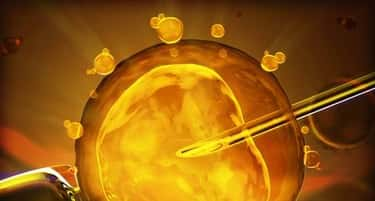A Journey through an In Vitro Fertilization (IVF) Cycle

In Vitro Fertilization (IVF) is an assisted reproductive technology (ART) that basically involves the process of fertilization by extraction of eggs, retrieval of a sperm sample, and physically uniting the egg and sperm in a laboratory dish for fertilization to occur. The resultant embryo(s) is afterwards transferred into the uterus of the intending mother or surrogate for implantation to occur. The majorities of IVF cycles start with the onset of the woman’s menstrual period. The IVF procedure is generally composed of five standard steps which include the embryo transfer stage:
Stage one
At the first stage, the woman is given fertility medications to stimulate the production of egg. Multiple eggs are usually produced to give room for some of the eggs that would not develop to full maturity or eggs that will not result to fertilization after the process of the egg retrieval. A trans–vaginal ultrasound is utilized in the assessment of the ovaries, and blood test samples are extracted and checked to ascertain the levels of the hormone.
Stage two
Stage two involves the eggs retrieval process. During the process, eggs are extracted through a minute surgical procedure that makes use of ultrasound imaging to direct a hollow needle through the pelvic cavity of the woman to retrieve the eggs. The woman is normally given some medications to minimize or eliminate likely discomfort she may experience.
Stage Three
During this stage, the male partner supplies a sperm sample that is used in the fertilization of the egg. This is usually done through masturbation although it could be obtained through sexual intercourse with the female partner.
Stage four
At this stage, through a procedure referred to as insemination, the sperm and eggs are mixed together and stored up in a laboratory dish to promote fertilization. In situations where there is a lower possibility of fertilization, intracytoplasmic sperm injection (ICSI) may be utilized instead of artificial insemination. Through the ICSI procedure, one sperm is injected straight onto the egg to boost the possibility of fertilization. The eggs are supervised to ascertain the occurrence of fertilization and cell division. As soon as this is achieved, the fertilized eggs are referred to as embryos.
Stage five
The embryos are normally transferred into the womb of the woman three to five days after egg retrieval and fertilization. To transfer the fertilized embryo into the womb of the woman, a catheter or small tube is used. It is by standard painless for majority of women but a few women would normally experience mild cramping similar to that experienced during menstrual periods. If the process goes well, the baby would usually implant on the wall of the woman’s uterus within six to ten days after egg retrieval. The process of embryo transfer is done through a simple process that does not require anesthetics, although the patients are usually given Valium to relax their muscles. It is thus, essential that the patient goes with someone who will drive her home after the process. The patients are usually asked to arrive at the clinic 30 minutes before the transfer and after the procedure; they must remain in bed before being permitted to go home. After the procedure, any excess viable embryo may be cryopreserved or frozen for future use by the woman. The initial progesterone suppository is positioned in the vagina during the time the embryo is being transferred. Afterwards, the woman is asked to make use of the suppositories two times daily till the end of the first trimester of pregnancy or when the second blood pregnancy test result shows negative.
Pregnancy Testing
Two pregnancy tests are usually carried out by standard. Blood sample is collected from the woman in the morning of the 9th day and on the morning of the twelfth day after the embryo transfer. Later in the afternoon of the same day, your medical personnel would normally get in touch with you and provide you with the test result.
Side effects of in vitro fertilization
Although you are normally required to take things easy after the procedure, the majority of women are usually able to return back to their standard daily routine the day after the procedure.
You may experience any of the following minor side effects after the procedure:
• Passing a minute quantity of fluid which may be clear or mixed with blood.
• Gentle cramping
• Minor bloating
• Constipation
• Tenderness of breast
If you witness any of the following major symptoms, you need to get in touch with your doctor straight away:
• Profuse vaginal bleeding
• Pain in the pelvic region
• Blood in the urine
• A fever with temperature above 100.5 °F (38 °C)